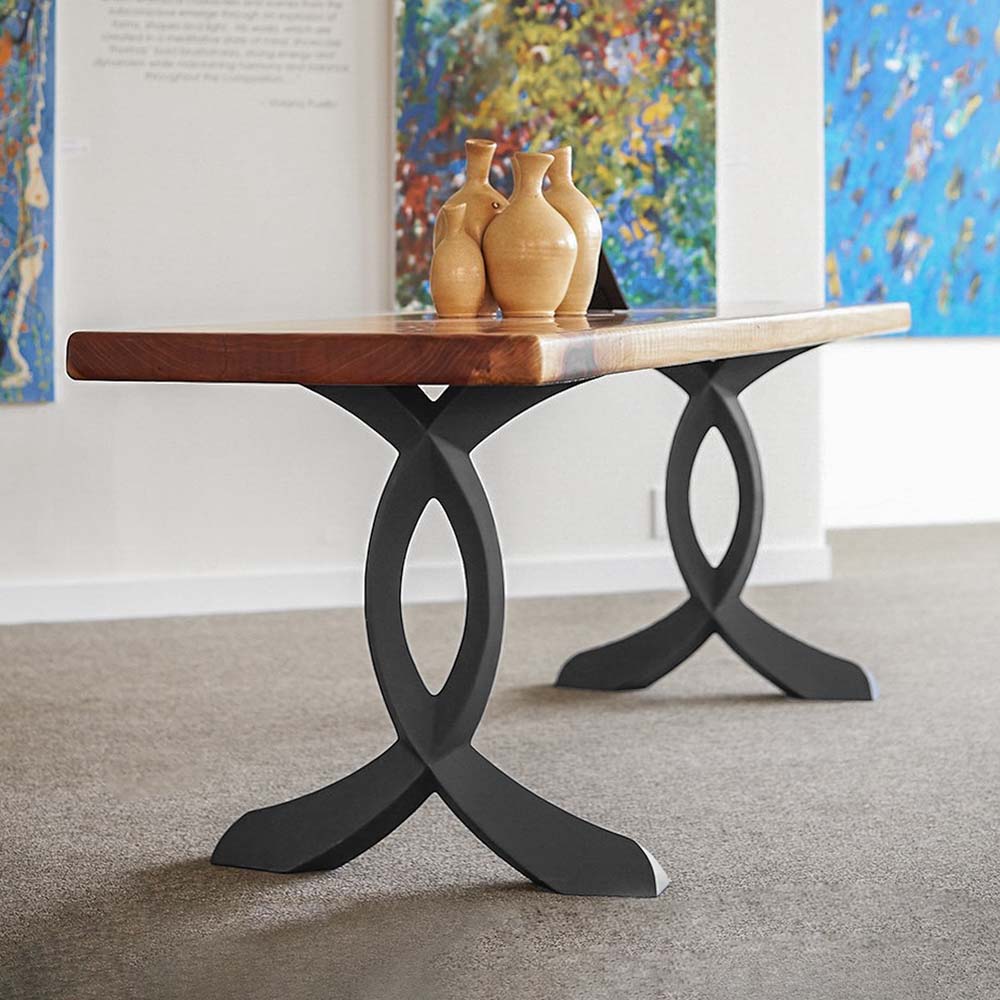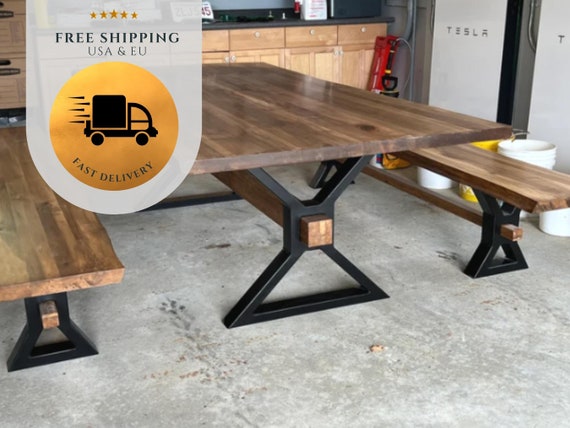Unique Dining Room Table Legs to Transform Your Eating Location
Unique Dining Room Table Legs to Transform Your Eating Location
Blog Article
Picking the Perfect Eating Table: What Styles Work Best for Your Home?
Choosing the ideal dining table for your home can be a nuanced procedure that stabilizes visual appeals and performance. To browse these selections effectively and discover a table that genuinely enhances your home, consider the following elements in information.
Examining Your Room
Assessing the measurements and design of your eating location is an important very first step in picking the excellent eating table. Begin by gauging the size and size of the area, accounting for doorways, windows, and other architectural features that can affect table positioning. This makes sure that your table not just fits yet additionally permits comfy activity around it.
Take into consideration the variety of individuals you commonly entertain. A table should suit your family's day-to-day needs while offering enough adaptability for periodic guests. As a policy of thumb, designate at the very least 24 inches of table size per individual to make sure a comfortable dining experience.
It's also important to keep ideal clearance around the table. Ideally, there should be at the very least 36 inches in between the table side and walls or other furniture, enabling very easy gain access to and motion. For spaces where chairs with arms or added storage units like buffets are involved, increasing this clearance to 48 inches is recommended.
Lighting and ambience play considerable roles too. Ensure that your eating table aligns with existing lights fixtures or prepare for adequate lights services. This comprehensive spatial evaluation guarantees that your eating table not only fits literally but likewise harmonizes with your space's overall performance and visual.
Popular Table Styles

Conventional table commonly feature ornate details, curved legs, and abundant timber finishes, evoking a feeling of timeless beauty. They are perfect for homes with classic style or those aiming to include a touch of class to their eating location.
Modern eating tables focus on simplicity and tidy lines, usually including materials like glass and metal. These tables are excellent for modern areas, offering a sleek and minimalist look that complements minimal style philosophies.
Rustic table, on the other hand, stress natural materials and a handmade appearance - dining room table legs. They frequently include recovered timber and a troubled surface, creating a cozy and inviting atmosphere. These tables function well in farmhouse-style homes or those seeking a comfy, natural feeling
Industrial eating tables integrate raw materials such as steel and wood, usually showcasing an utilitarian visual. This design is appropriate for loft spaces or metropolitan spaces, adding a touch of sturdy appeal and resilience to the dining experience.
Each style supplies unique benefits, making it important to choose one that lines up with your home's total design and your personal choices.
Product Options
When picking a table, the option of product plays an essential duty in figuring out both the table's aesthetic appeals and capability. Wood, metal, glass, and composite products each deal unique benefits and obstacles, making it crucial to line up the material with your home's decoration and way of living needs.
Wood is an ageless and functional option, offered in selections such as oak, walnut, and mahogany. Known for its toughness and heat, timber complements both conventional and contemporary insides. Nonetheless, it calls for routine upkeep to protect against scrapes and warping.
Steel tables, usually crafted from stainless steel, aluminum, or functioned iron, are praised for their modern appeal and robustness. They are particularly suited for commercial or minimalist settings but can be vulnerable to damages and might feel chilly to the touch.
Glass eating tables bring an air of elegance and openness, ideal for smaller spaces as they create an impression of even more area. pop over here While very easy to clean, glass can be vulnerable to smudges and requires mindful handling to prevent chips and splits.
Composite products, such as MDF and plywood, offer affordable and customizable solutions, though they might do not have the durability of natural products. Choosing the best material guarantees your table is both a practical possession and a visual joy.
Sizes And Shape Considerations
After determining the appropriate product for your table, the next factor to consider is picking the best sizes and shape to suit your room. The shape of the table considerably affects the space's aesthetic and capability. Rectangle-shaped tables, one of the most common form, are suitable for larger rooms and can fit a higher variety of guests. They also allow for a more formal eating experience. On the other go to website hand, round tables cultivate a sense of affection and are outstanding for smaller sized dining locations, motivating conversation by getting rid of corners and making everybody feel equally consisted of.
Dimension is similarly crucial and must be determined by both the room's dimensions and the variety of individuals you plan to seat on a regular basis. Generally of thumb, allot at the very least 24 inches of table width each to ensure comfortable dining. Furthermore, take into consideration the table's clearance space: there ought to go to the very least 36 inches in between the table edge and the walls or other furniture. This makes sure that restaurants can walk around quickly without really feeling confined. Expanding tables offer flexibility if you often hold bigger events, giving extra seats when required without inhabiting added room daily. Picking the right sizes and shape ensures both usefulness and aesthetic harmony in your dining area.
Matching Your Design
Choosing a table that integrates with your existing decoration is critical in developing a natural and inviting room. Begin by examining your present interior decoration style, whether it be contemporary, standard, rustic, or eclectic. The try this site table must complement the overall aesthetic, not take on it. For example, a streamlined, minimalist table with tidy lines is optimal for a modern home, while a vintage, luxuriant table suits an extra conventional setup.
Color and material are similarly substantial. If your decor features cozy tones and all-natural materials, consider a wood table to enhance the natural feel. On the other hand, a glass or steel table might be better suited in a space controlled by cool colors and industrial aspects. Take notice of the finish, as it should mirror other furniture and components to maintain harmony.
Appearance plays a crucial role. A rough-hewn, reclaimed timber table can add personality to a rustic area, while a sleek marble surface area can raise a luxurious eating area. Consider the scale and percentage of the table in relationship to the space dimension and existing furnishings. A well-matched table not only enhances aesthetic charm however also enriches the total eating experience.

Conclusion
Selecting the perfect dining table necessitates careful factor to consider of room, design, products, form, and dimension. Standard tables complement classic interiors with rich timber coatings, while contemporary tables fit contemporary settings through glass and metal.
Report this page